2009 Toyota Camry Hybrid
While practically every irritable commuter complains about the price of fuel, most are not willing to pay an up-front premium for the fuel-efficiency and peace-of-mind that come standard with Hybrid ownership. That is slowly changing as the technology is constantly improving and the initial price of ownership is decreasing.
FAST FACTS
| 1. The Camry Hybrid bests the Malibu and Aura Hybrids with a 33/34 (city/highway) mpg rating. |
| 2. The Hybrid Synergy Drive in the Camry features a 2.4-liter engine with 147 hp at 6000 rpm and 138 ft-lbs at 4400 rpm. The electric motor then adds 40 hp. |
Within the Hybrid market, perhaps the most competitive class is that of the family sedan. They may not be as powerful and/or enticing for some as, say, a premium SUV, but they are far more common. While hardly the most exciting vehicle in the parking lot, the Camry has found a home in hearts and driveways of millions of Americans over the years, thanks to it’s reputation for quality and reliability.
CAMRY: FROM DOMINATING THE SEDAN MARKET TO DOMINATING THE HYBRID SEDAN MARKET
For two decades now Japanese manufacturers like Toyota and Honda have had a stranglehold on the family sedan market and while recently vehicles like the Saturn Aura, Ford Fusion and Chevrolet Malibu have recently garnered critical acclaim, the Camry is still consistently on the top of car buyer’s wish lists. The fact that Toyota offers a Hybrid alternative only helps that cause, especially now as Ford and Chevrolet offer Hybrid versions of their family sedans.
When Chevrolet introduced the new Malibu, they used Camry as the. After driving the Malibu Hybrid, I figured a back to back comparison was necessary to see how the two cars faired. While I feel the Malibu is superior in terms of styling, ergonomics and handling, the Camry has more than a few things going for it, most importantly fuel-economy.
SLOW BUT FUEL-EFFICIENT
Recently I had the opportunity to drive both the Hybrid and regular gasoline powered XLE models of the Camry, which were very similar in many ways but differed in regards to their performance and fuel economy. The Hybrid powerplant offers a 2.4L gas engine, Hybrid Synergy Drive (HSD) and Electronic Throttle Control System with Intelligence (ETCS-i). While the 2.4L four-cylinder Hybrid engine offers estimated fuel mileage of 33/34 mpg (city/highway), it’s hardly sprightly – but then again, neither are any of the Hybrids in this category. The car weighs in at 3,483 lbs offering 147 hp at 6000 rpm and 138 ft-lbs at 4400 rpm. The electric motor adds 40 horses brining the total power output to 187, which is adequate but it certainly won’t give you goose bumps. These specs, along with the Camry Hybrid’s Continuously Variable Transmission (CVT) did make for a more spirited drive than the Malibu, in addition to the fact that the Toyota is a true Hybrid – meaning that the electric motor can actually propel the vehicle under certain conditions.
More important than all this for Hybrid customers are those EPA fuel ratings and while the Malibu and Camry hybrids both rate at 34 mpg on the highway, the Malibu gets just 26 mpg in the city, compared to the Camry’s 33 mpg rating.
As a result of its numbers the Camry Hybrid is classified as both a ULEV (Ultra Low Emission Vehicle) and an AT-PZEV (Advanced Technology Partial Zero Emission Vehicle).
V-6 XLE MODEL OFFERS POWER
If power is what you are after, Toyota also offers the 3.5L DOHC VVT-i V6 in the XLE version, which boasts 268 hp at 6200 rpm and 248 ft-lbs of torque at 4700 rpm. Unfortunately it doesn’t feel as fast as 268hp sounds.
Still, the V6 offers ample power for a family sedan, which can easily accommodate lane changing and highway passing. In addition to this added power, the V-6 has (obviously) poorer fuel economy than the Hybrid, as well as an abundance of torque steer. Handling in both models felt stable but not as smooth and precise as the in Malibu. Who would have thought?
Price for the Camry Hybrid starts at $26,150, which is ever so slightly cheaper than the Malibu Hybrid – $75 cheaper to be exact. As for the V-6-powered Camry XLE, it retails for $25,575. As for the Ford Fusion Hybrid, an MSRP has yet to be released although the EPA rating puts it ahead of the Camry in the fuel-economy wars.
CLASSIC TOYOTA INTERIOR
The interior of the Camry is no different than what buyers have come to expect from Toyota; no fancy tricks or flashy gimmicks with just the basics in place – nothing more, nothing less. While interior space is well organized and materials do not feel cheap, they did look and feel rather drab. The XLE unit I drove had an easily operated navigation screen as well as HVAC and music controls. The Hybrid tester, however, utilized small buttons with tiny printing on them that I found unnecessarily complex. Not only were they difficult to operate with gloves on, they took my eyes away from where they should be focused- the road.
THE VERDICT
While I admit that the current Camry offers drastically improved aesthetics over past models, I feel that it still falls short in the styling department when compared to direct rivals such as Accord, Aura and Malibu. Neither the Hybrid nor the XLE models offered a negative driving experience, nor did they offer a memorable one. For all intents and purposes, the Camry offers a great well rounded package that customers find appealing to both their best judgment and pocketbook. Having the option of a class-leading Hybrid should only add to that appeal.
PLUS
- Excellent fuel-economy
- Above average four-cylinder performance
- Abundance of interior space
MINUS
- Torque steer
- Lacks passion and panache
- Poor layout of dash controls on models without navigation
More by Dustin Woods
















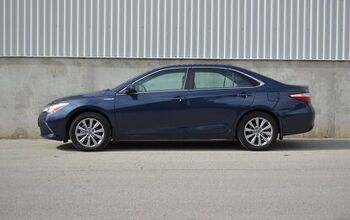


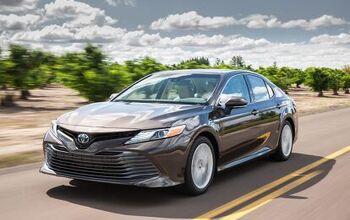

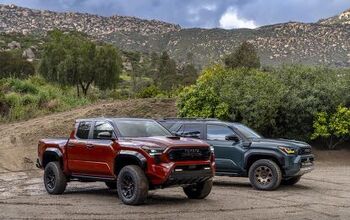
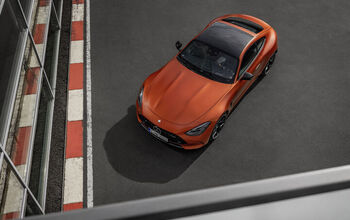


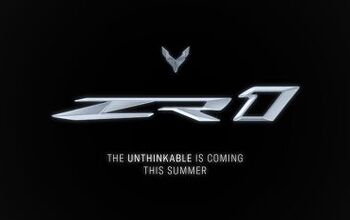
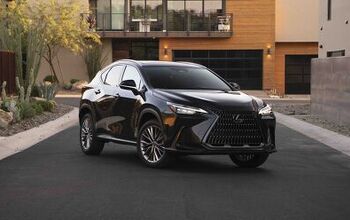

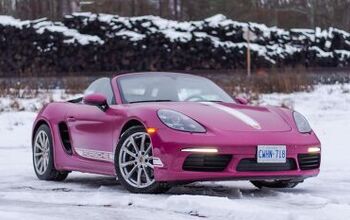

Comments
Join the conversation